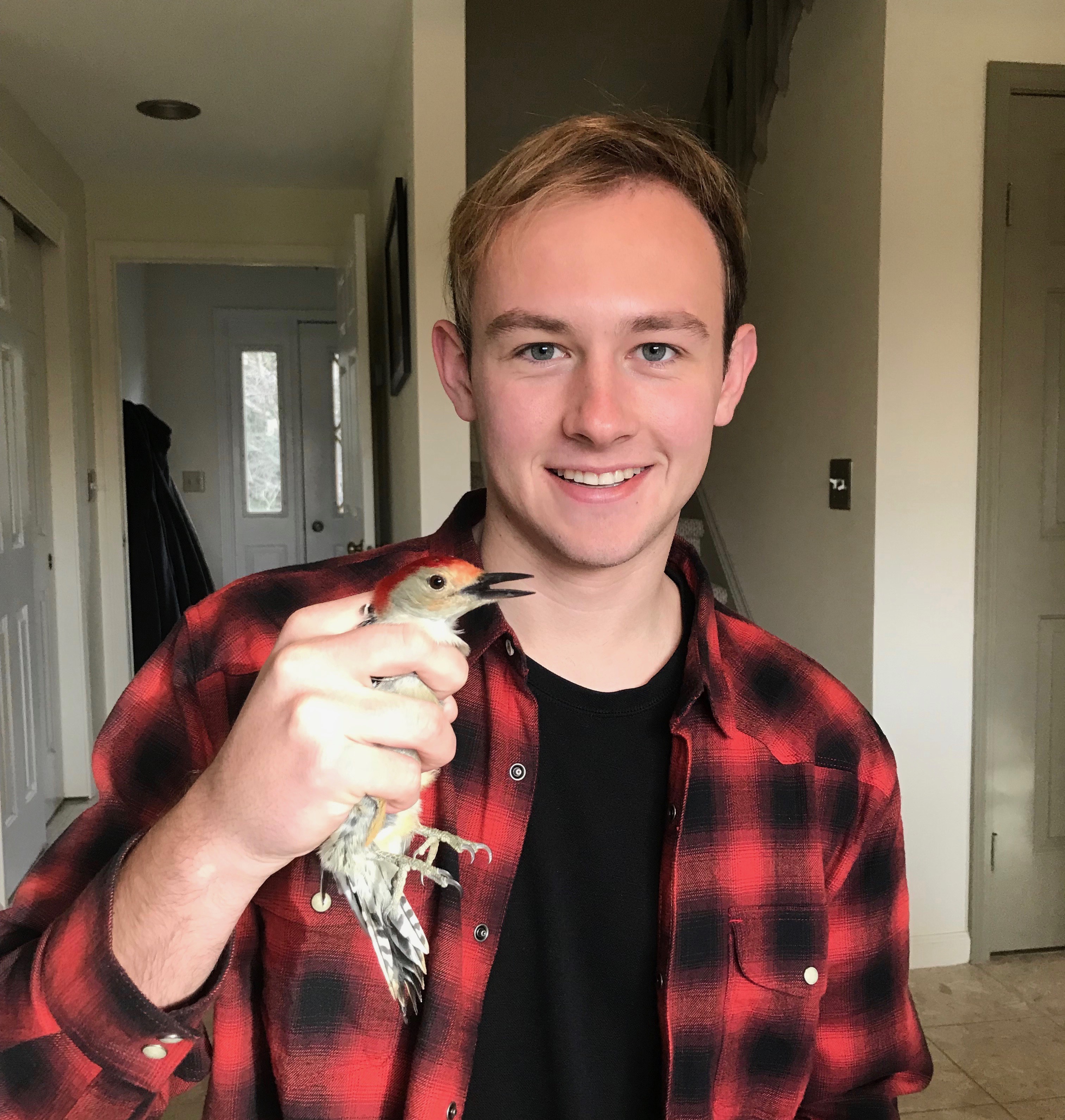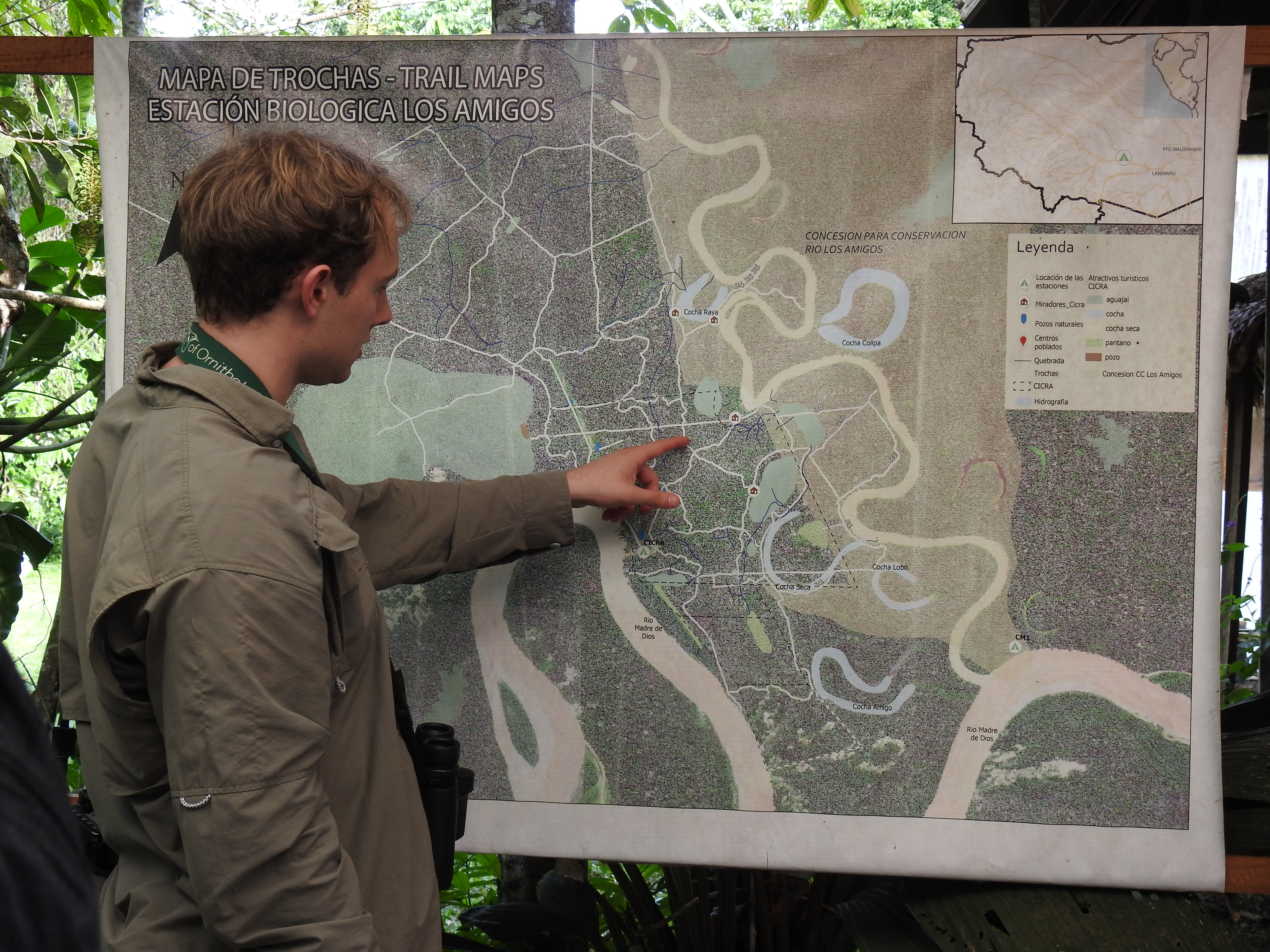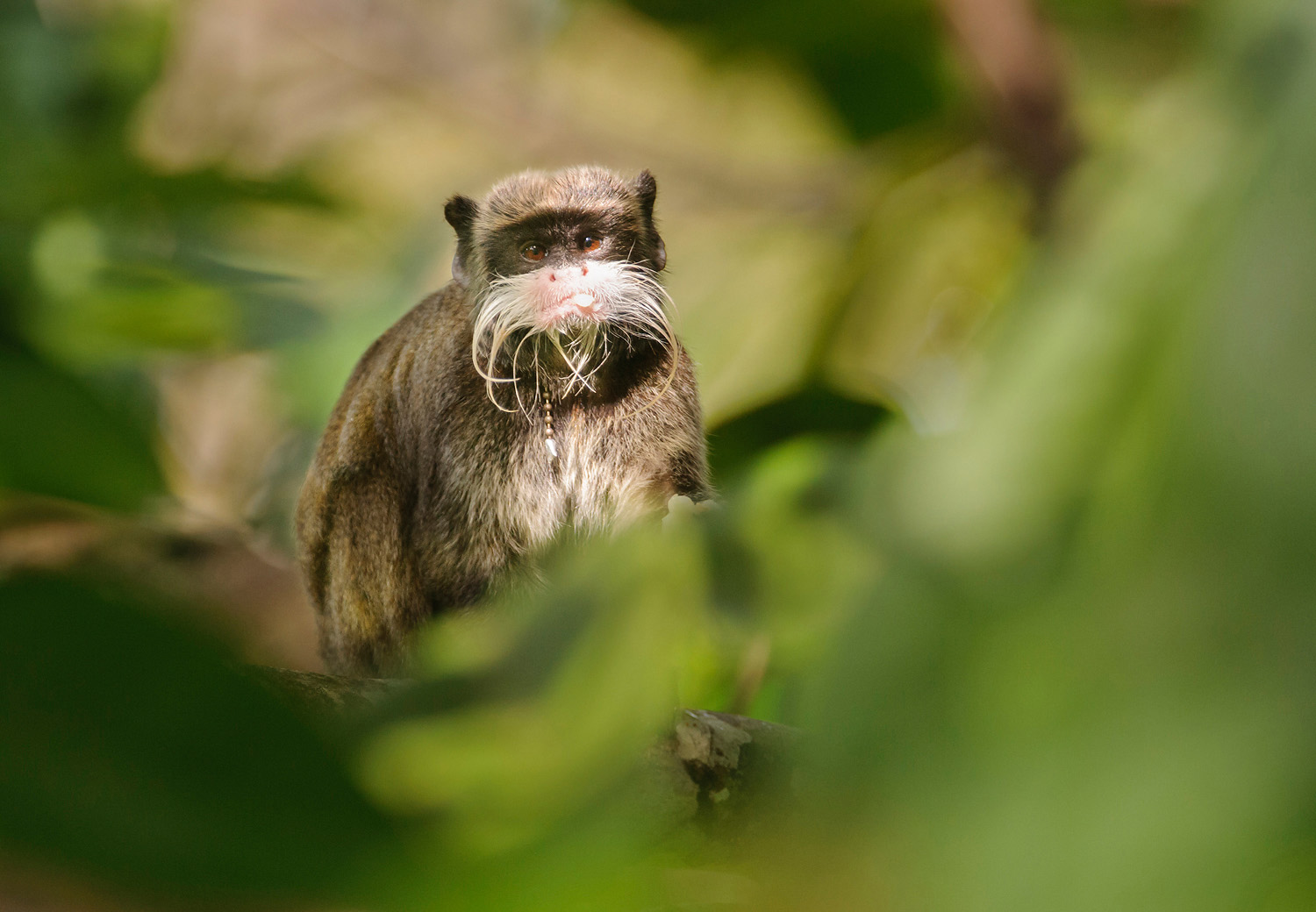Birds and wildlife, that’s what I was hoping to see on my journey to the tropical rainforest in southeastern Peru with conservationists from Amazon Conservation. Our destination was Amazon Conservation’s Los Amigos lodge and research station, part of a pristine 350,000 acre conservation concession area bordering the iconic Manu National Park. Traveling to the lodge on a lovely four hour boat ride up the Madre de Dios river set the tone for our adventure. We scanned the river banks and were rewarded with jabirus, horned screamers, wood storks and black hawk-eagles in flight, pied lapwings and large-billed terns on sandbanks, a collared peccary swimming across the river and a large capybara by the shoreline. Mining activity was also present along the river, a stark reminder of the importance of protecting habitat.
When we reached the lodge I was transfixed by the myriad sights and sounds. Troops of dusky titi monkeys roared at each other to demarcate their territories, toucans and guans festooned the tree canopies, macaw calls rasped overhead and normally secretive undulated tinamous scratched for food unconcerned by our presence. I quickly wished I had more than three days to enjoy this paradise, but vowed to appreciate what I could. The Los Amigos facility is perched several hundred feet above the river, affording indescribably beautiful views of the river and tropical forest. The cabins have basic furnishings, but are very clean and comfortable. Screened walls keep insects out while allowing forest sounds to permeate the room. Owls, pauraques and potoos serenaded at night, a prelude to the rich dawn chorus with its symphony of melodies and tones each morning.
Our daily plan was simple – walking different trails leading to varied habitats, keeping our eyes, ears and minds open, and eating three fresh, tasty, healthy meals to keep us fortified. Often walking the few hundred feet from the lodge to the start of a trail took ages as fiery-capped manakins, yellow-browed tody-flycatchers, cream-colored woodpeckers, lemon-throated barbets, or troops of titi monkeys, squirrel monkeys, emperor tamarins, saddle-backed tamarins, or brown capuchins would distract us from our destination! The forests held delights of their own, we spotted rufous-capped nunlets, striolated and semi-collared puffbirds, trogons, jacamars and antbirds. We explored terra firma and varzea forest, moriche palm swamps, bamboo forest, and a glorious oxbow lake where we saw giant river otters and countless hoatzins. Amazon Conservation’s staff are fountains of knowledge about species behavior and identification, interaction between mammals, insects and food types, and numerous characteristics of the different forest habitats.
Several evenings we returned to the lodge after dark, which allowed us a window into an entirely different world. We saw katydids four inches long that looked exactly like leaves with decay spots and veins. On a tree was an eight inch moth called a white witch, and by the trail side was an ocellated poorwill, beautifully cryptic and perfectly still. With a crested owl calling nearby, we had the good fortune to see a small troop of night monkeys. I was delighted to learn how Amazonian nights could be as magical as the days.
In three days at Los Amigos I felt like I’d learned so much about the forest, its inhabitants, and many of the conservation efforts pioneered by Amazon Conservation. The time passed too quickly yet I felt like I’d been gone a long time and felt physically and spiritually refreshed. I look forward to a future visit to this magical place. In the meantime, I’m glad to know that life there is thriving and I’m inspired to do what I can to see that continue.
– Jeff Woodman, Amazon Conservation Board member, birder and conservationist
To plan your trip to Los Amigos, visit our website: http://birding.amazonconservation.org/los-amigos/







Leave A Comment